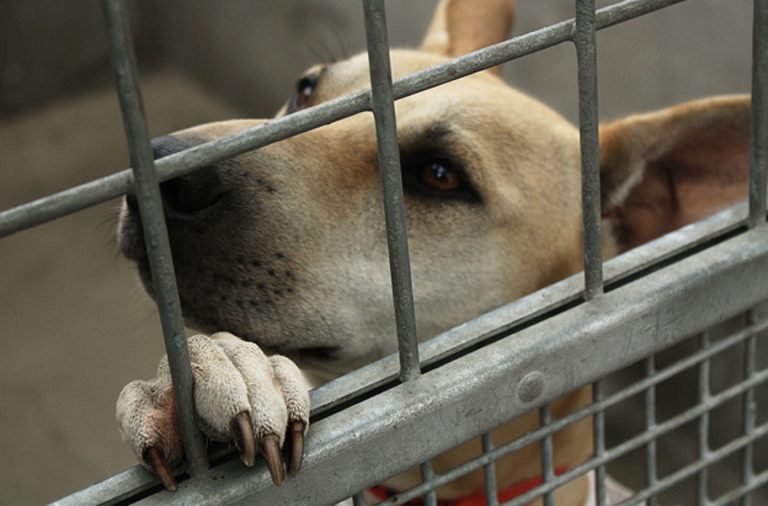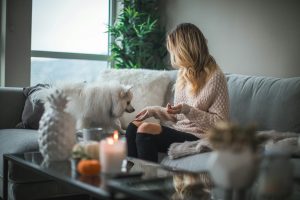People love their dogs. But being a pet parent is not all cuddles and games of fetch. Some dogs never learn to play fetch. Being a dog owner comes with a lot of responsibility. And the problem is, many novice dog owners fall into bad habits. It is not your fault. You haven’t had a dog before. And almost always, people end up making dog mistakes that prevent their dogs from having a happy life.
Both a new dog owner and an experienced dog owner can fall into these traps. It is the reason why dogs end up in shelters.
Dogs end up in a shelter because of a lack of training. And the fun fact is that most owners do not have trouble with biting. But they draw a line when the dog barks, poops and chews on things in the house.
Spoiler alert: all of that can be prevented with proper training. Let’s take a look at some dog mistakes.
Dog pees in the house
This is the Number 1 mistake owners do with their new dog. They think training starts after a few days. WRONG. Training starts the moment your puppy enters the home.
The first day in your home is important. This is when you start creating habits with your pup. And that is when potty training starts. Peeing in the proper place is the most important habit.
House training can take forever without crate training. But the first thing you need to do is prepare your home for your pup. If you are getting a dog that has to stay home before he gets all the vaccines, prepare the home for a puppy that will stay inside.
That means creating a place where your new puppy can pee and poop before the vaccination period. Most dogs will pee the second they enter a new home. Why? Because of anxiety. So, the moment your puppy enters your home put him in the place where you want him to pee and poop. Wait for him to do his business, and give him a treat.
Pay attention to your dog during the first few days. Anytime he is getting ready to pee, put him on the designated spot for peeing. Puppies usually pee after they wake up and after they drink water.
Here is the MOST important thing, the designated pee area should be away from your dog’s bedroom.
Tight Leash when Meeting another Dog
Is your dog reactive? Is your dog super friendly with dogs in the dog park when he is off lead? Does he love hanging with people? But then you put him on a dog leash, and he turns into a completely different dog. Dr. Jekyll and Mr. Hyde if you like. Your dog suddenly starts barking and lunges at every dog.
This is not just embarrassing behavior. It is also dangerous. And you are the one to blame for aggressive leash behavior. If you think you are the only dog owner or pet parent faced with this problem, you are not.
Leash aggression occurs with dogs attached to a leash. Your dog reacts to stimuli, including people, cars, cats, and other dogs. And you are encouraging the behavior because you are walking him on a tight leash.
A tight leash gives your dog a signal he needs to protect you. He senses your fear and danger. So, instead of being a calm and happy puppy, your dog changes its stance into a protective dog.
What should you do instead? Well, guide your dog on a loose leash. And if you see a dog that you do not want to great, simply change the direction. Turn for 180 degrees and walk away. This gives your dog an idea that you are the leader.
Or, you can put your dog in a sit position, and wait for the other dog to pass by. Make sure to maintain contact and focus with your dog.
Letting your dog have fun alone
This is another common dog training mistake. Yes, your puppy should have his free time to roam. But you have to be part of the fun.
What happens is you let your dog roam free. And then you call him, put on a leash, stop the fun, and go home. What does your dog learn? If I come back to my owner, the fun stops and I go home. So, it is not something rewarding to your dog.
And after a while, he might stop coming back. At this point, you have a dog with a non-reliable recall that can cause lots of incidents.
What you should do instead? Well, for starters, do not let your dog walk around or play with other dogs without you being part of the fun. You can bring a toy on walks and play with your dog. Or during a play session in the dog park, stop the play for a second, let your dog sit, and then have him continue playing. This rewards your dog for playing properly with other dogs.
And once you want to go home, call your dog, reward him with treats, and then go home. Reward him more while going away from the doggy park.
Rewarding bad behavior
Some owners unknowingly reward bad habit. And this is dangerous, especially with reactive dogs. It is one of the many reasons why you have a reactive dog. You ignore the good behavior and reward bad behavior.
How do you do that? Well, you walk around with your dog, you meet a friendly dog, your dog is friendly as well, they sniff, and you continue walking. Absolutely no response from you. No treat, no praise, no nothing. You consider this a normal thing. Your dog should normally greet dogs in a friendly way.
You should never let good behavior pass unrewarded. When your dog meets another pup, sniffs, and continues, you reward it.
What we do instead is react only when our dog barks at other dogs. You are basically training your dog to bark. You provide feedback that is unrepresentative. Your dog barks and you shout NO or yell at your dog. Completely wrong way to handle the situation.
This happens at home when your dog barks in the yard or on the balcony. Instead, you should reward good behavior and teach your dog to Shush.
Taking your dog into a crazy environment
This happens with almost any new dog owner. The first mistake a new owner makes is taking his dog into a crazy environment. You have your puppy at home. He is fine and behaves properly.
And you think, hey, let me take my dog to the park where there are kids, dogs, music, and everything in between. Or, let’s go to a concert with my dog.
Well, WAIT. You gradually increase distractions in your dog training. You cannot go from zero to 100 in a matter of seconds.
What happens is your dog is in an environment where he doesn’t know how to behave. He is nervous, anxious, stressed, and doesn’t know how to lead itself. And even worse. Owners yelling at their dog for doing something wrong. Well, you haven’t taught him what is right, RIGHT?
Yes, socialization is an important part of your dog’s life. But you cannot go to the dog park where there are 100 dogs your puppy doesn’t know on the first day outside. Gradually introduce him to a few dogs in your block on walks. And then when he is comfortable hanging out with other dogs, go to the park when there are fewer dogs. Gradually increase the distractions.
Bonus: Picking the Wrong Dog
Let’s get something out of the bag first. Any dog can adjust to your lifestyle. Even an English Bulldog can go hiking or do some agility classes. But you have to teach him and train him to do that. That means lots of effort, energy, and time.
But, we have to STRESS this. You should not get a dog that is not suitable for your lifestyle. You should also not get a dog before you are ready.
Read about the responsibilities of being a dog owner. It is not all milk and honey and happy walks. Before you get a dog, try to answer these questions honestly:
- Can you and will you take the necessary time to provide training, exercise, and other activities for your dog?
- Will you put up with the shedding and chaos around the house?
- Will you be patient to go through any behavior problem that might arise with your dog?
- Can you afford the dog?
- Can you afford high veterinary bills because of illnesses?
- Does your living space provides enough comfort for a dog of that size?
- Do you have a pet already and how will he tolerate the new family member?
- Are you ready to own a dog?
Only by answering these questions honestly, you can prevent any dog mistakes that might arise.







